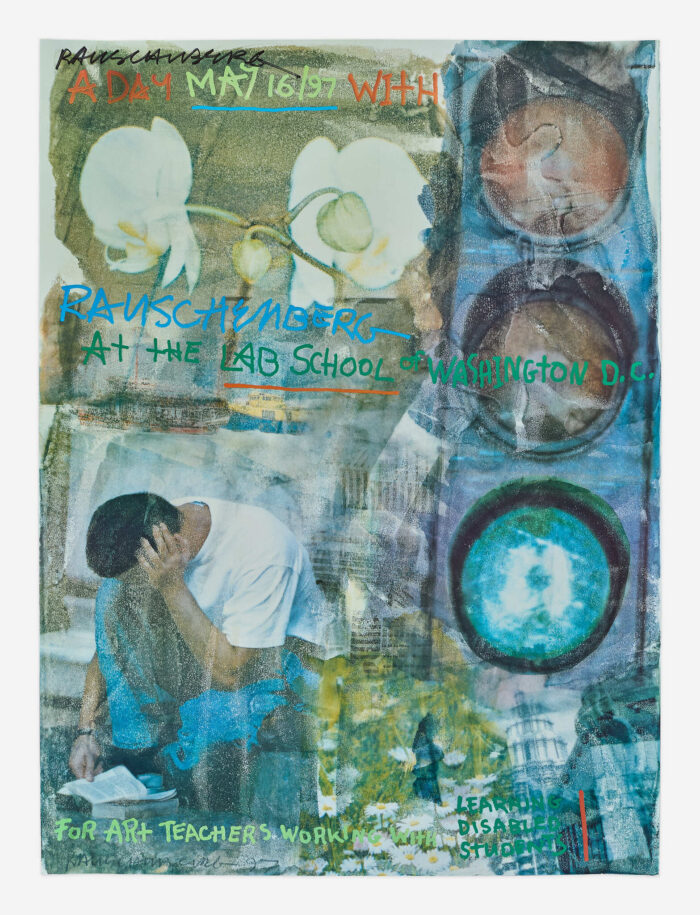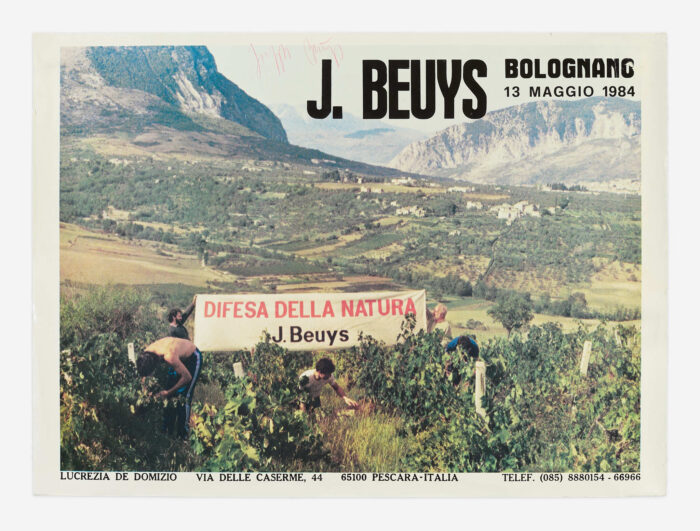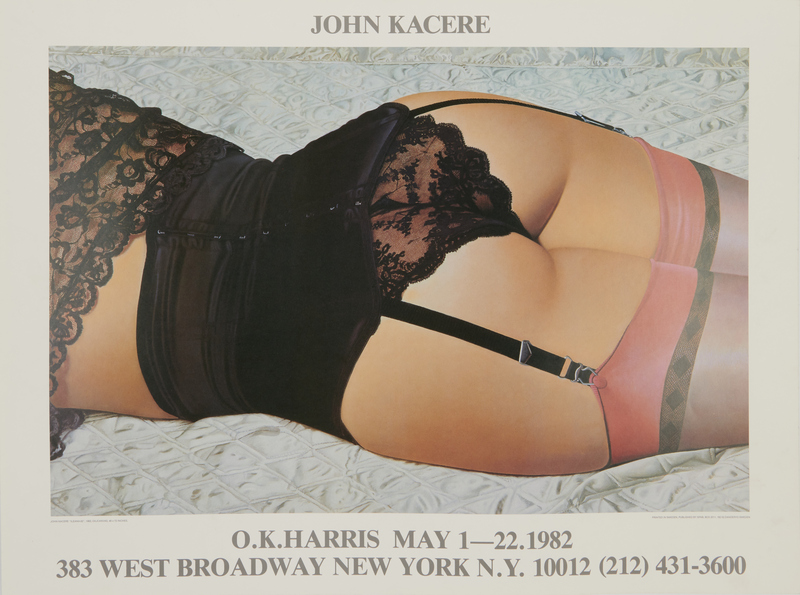Gallery 98 keeps adding new items to our inventory. Recently, we have been fortunate to acquire a collection of quality posters, some signed by the artists who created them.
What makes for a top-tier poster? In addition to looking good when hanging on a wall, a poster should also have something interesting to say. Some of the themes touched on in the posters below are the connection between minimalism in art and music; art advocating for the environment; and the never-ending battle about nudity and sexuality.
Richard Serra and Philip Glass, 1972

Richard Serra, Philip Glass, Concert, Leo Castelli Gallery, Poster, 1972. Size: 31 x 41 inches — Available
When Philip Glass first began composing music in a minimalist vein, he realized that it was art galleries, not music venues, that were most responsive to his work. He owed much to his friendship with artist Richard Serra, whom he first met in Paris in the mid-1960s. Serra employed Glass as a studio assistant from 1971-74 and helped connect him with art galleries interested in minimalism. While Serra’s name does not appear on the poster, the image is from a signed and numbered Serra print that also dates from 1972.
An earlier newsletter discussed musician Steve Reich and minimalist art
Robert Rauschenberg and The Lab School of Washington D.C., Signed, 1997

Robert Rauschenberg, A Day with Rauschenberg for Art Teachers working with Learning Disabled Students, The Lab School (Washington DC), SIGNED Poster, 1997. Size: 26 x 35 inches — Available
The always generous Robert Rauschenberg often made posters and donated works for worthy causes. This poster, however, was special. Since childhood Rauschenberg suffered from severe dyslexia and the Lab School’s specialty was working with learning disabled students. According to Rauschenberg’s son Christopher, “he fell in love with the place” and asked “why didn’t I get to go to a school like this?” He continued making posters for the school’s yearly Power of Art conferences, and following his death, the Rauschenberg Foundation has maintained its support.
See more items from Robert Rauschenberg
Joseph Beuys, Defense of Nature, Signed, 1984

Joseph Beuys, Difesa Della Natura (Defense of Nature), Galleria Lucrezia De Domizio, SIGNED Poster, 1984. Size: 24 x 31.5 inches — Available
Joseph Beuys created the term “social sculpture” to express his belief that art could transform society. This poster connects to Beuys’ interest in the environment, best expressed in the mid-1980s by his ongoing project to plant 7,000 oak trees along with stone markers in the heavily bombed city of Kassel, Germany. The Dia Art Foundation expanded the project to NYC with twenty-five trees and basalt stones along 22nd Street. This year, The Broad in Los Angeles used the image from the 1984 Beuys poster featured here to help publicize their own version of 7,000 Oaks, the planting of 100 California native oak trees in Elysian Park’s Chávez Ridge area.
See more items from Joseph Beuys
Spencer Tunick, Reaction Zone, 2000

Spencer Tunick, Reaction Zone, Also with a video about Tunick by Chris Habib with music by Sonic Youth, I-20 Gallery, Poster, 2000. Size: 24 x 32 inches — Available
Since the early 1990s, Spencer Tunick’s performances have involved posing nudes creatively in outdoor settings. At first he was discreet, leading art writer Carlo McCormick to humorously describe Tunick’s street works as “human graffiti” under the radar of the authorities. But with the “Reaction Zone” series, begun in 1994, Tunick raised the stakes and deliberately staged performances in conspicuous high-profile locations certain to attract the police. One case following his arrest made it all the way to the Supreme Court, which in a 1999 decision upheld Tunick’s constitutional rights to stage his performances with the proper permits. This poster features a legal NYC performance at 23rd Street and 10th Avenue very close to the location of the I-20 Gallery.
John Kacere, Ileana, 1982

John Kacere, Ileana-82, OK Harris Gallery, poster, 1982. Size: 32 x 24 inches — Available
Like other early practitioners of photo-realist painting, John Kacere staked out his own distinctive subject matter and stuck with it. His focus was lingerie-clad women’s bottoms, a choice that not surprisingly, some people loved and others hated. Kacere’s imagery became influential. Sophia Coppola credits it as the inspiration for the long 33-second opening sequence of her film Lost in Translation which shows a close-up of Scarlett Johansson’s lingerie-clad behind.
Find more Kacere items in our Nudes and Pin-Ups category










